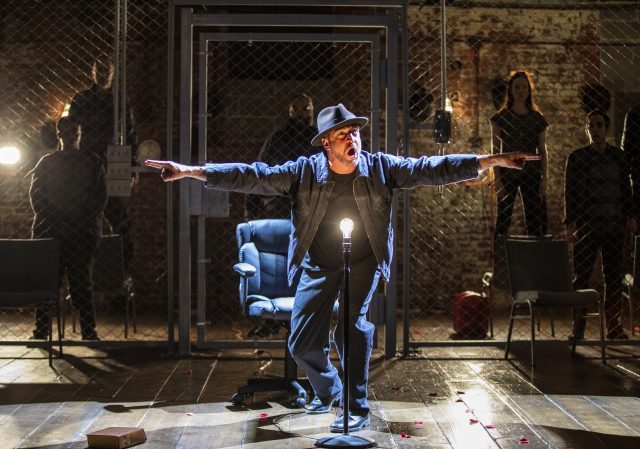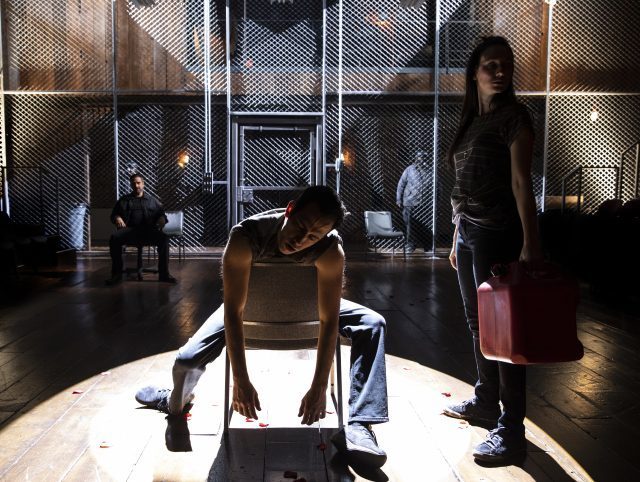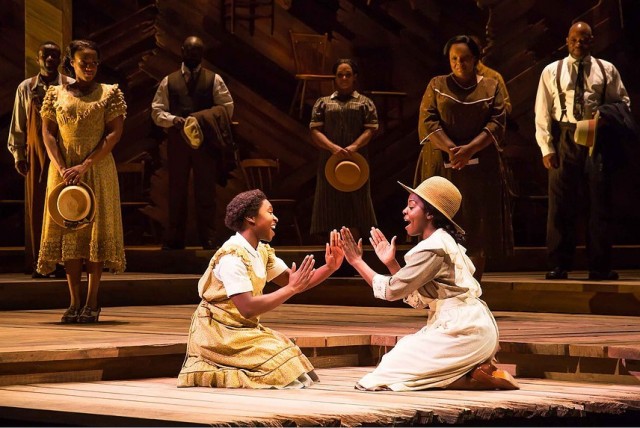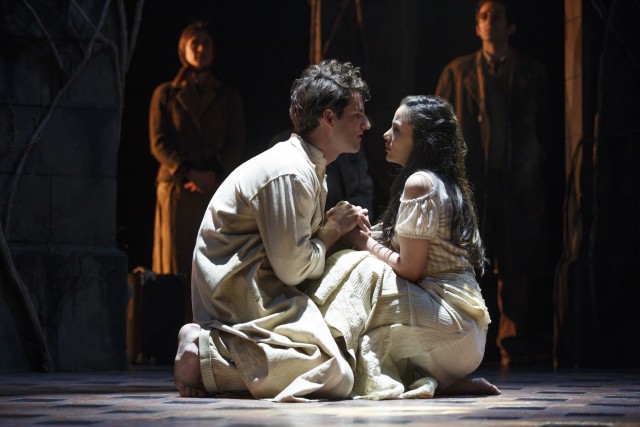
Raúl Esparza stars as title character in Classic Stage revival of The Resistible Rise of Arturo Ui (photo by Joan Marcus)
Classic Stage Company
136 East 13th St. between Third & Fourth Aves.
Tuesday – Sunday through December 22, $82-$127
www.classicstage.org
As twenty-first-century Fascism takes root around the world — and, arguably, to some extent, here in America — it is an appropriate time for a revival of Bertolt Brecht’s 1941 parable, The Resistible Rise of Arturo Ui, and John Doyle and Classic Stage Company have done just that, using the 1964 English translation by George Tabori. The play does not have the most illustrious history; because of its content, it was never produced in Brecht’s lifetime (he died in 1956 at the age of fifty-eight), and two Broadway productions, one starring Christopher Plummer as the title character in 1963, the other with Robin Gammell in 1968, ran for a grand total of twenty-three performances, including previews. Tony Randall’s National Actors Theatre staged the allegory in 2002, with an all-star cast that included Al Pacino (as Ui, which rhymes with “phooey”), Steve Buscemi, Dominic Chianese, Billy Crudup, Charles Durning, Paul Giamatti, Sterling K. Brown, John Goodman, Chazz Palminteri, Tony Randall, and Linda Emond; among the others to try their hand at Ui are Peter Falk, Leonard Rossiter, Antony Sher, Nicol Williamson, and Hugo Weaving. Classic Stage previously put it on in 1991, with John Turturro in the lead.
For his uneven version, Tony winner Doyle (Sweeney Todd, The Color Purple) has turned to four-time Tony nominee Raúl Esparza, who starred in Doyle’s 2006 Tony-winning revival of Stephen Sondheim’s Company, to play Arturo Ui, a Chicago gangster intent on taking over the cauliflower market. “But truth will come to life, fraud can’t be hid too long! / To put it bluntly: Chaos reigns supreme / If everybody does as he damn pleases, / Prompted by egoism, which is a grievous fault,” Ui declares, and chaos does reign supreme in this adaptation. Ui is based on Adolf Hitler during the 1930s; the cast also features Christopher Gurr as Dogsborough (Paul von Hindenburg), Elizabeth A. Davis as Giri (Hermann Göring), Eddie Cooper as Roma (Ernst Röhm), Thom Sesma as Givola (Joseph Goebbels), and George Abud as Clark (Franz von Papen). The two-act, 130-minute play begins with all eight actors behind a floor-to-ceiling chain-link fence, as if in prison. (Doyle designed the set as well, a warehouse representative of the Reichstag.) They exit and return through a door monitored by a guard; the central area is an open space with tables and chairs. The audience sits on three sides, and the characters often speak to them directly.

Bertolt Brecht’s The Resistible Rise of Arturo Ui tackles the Chicago cauliflower market (photo by Joan Marcus)
The play features many long speeches in iambic pentameter, including excerpts from Shakespeare’s Julius Caesar, amid power grabs, corruption, threats, scandal, and deception. “He guarantees to double our grosses, / Because the grocers, Mr. Ui says, / Would rather buy a cabbage than a coffin,” Flake (Mahira Kakkar) tells Clark. But for all his bluster, Ui is also a pathetic figure at odds with his ambition. “Nobody cares enough to bump you off,” Roma, his right-hand man, advises him. Ui responds, “They don’t? You see? That’s what I mean, Ernesto. / They’re giving more respect to horse-manure. . . . I’m gonna take him for a ride, Ernesto, / As soon as I get credit for a car.” The absurdity continues when Ui declares, “It’s cauliflower now! Or bust. One day / The vegetable business shall be mine!” But in the Trump era, it also is all-too-believable that a leader can be so petty and ridiculous — and comparing the Trump administration to a gang of criminals is not unfamiliar to this audience. Thus, as a cautionary tale, Ui feels too late. Combined with inconsistent acting and pacing and too many scattershot elements that don’t come together, The Resistible Rise of Arturo Ui turns out to be not irresistible.



